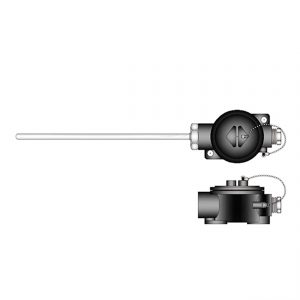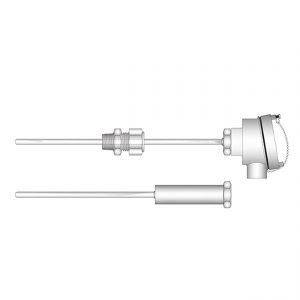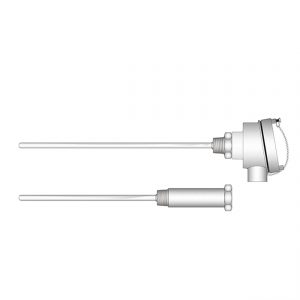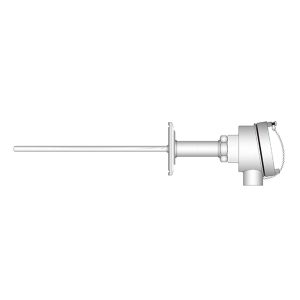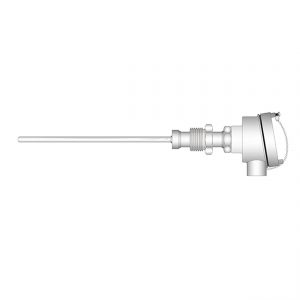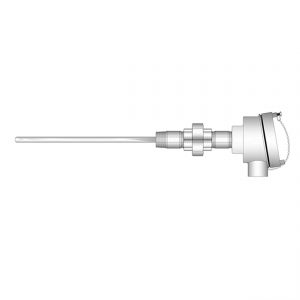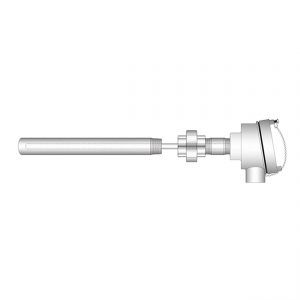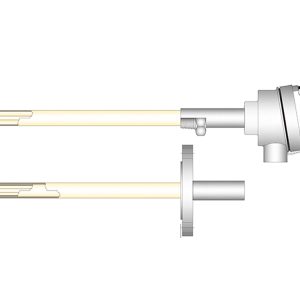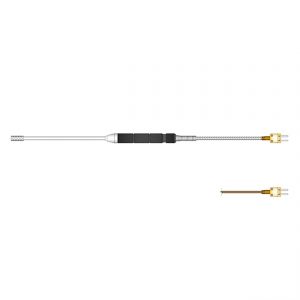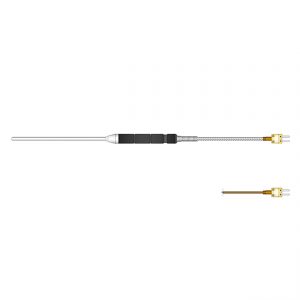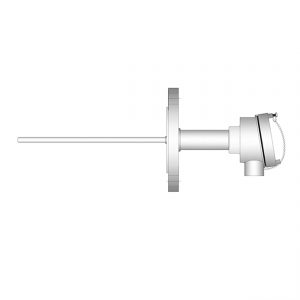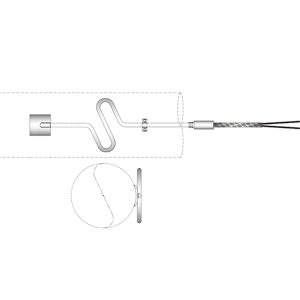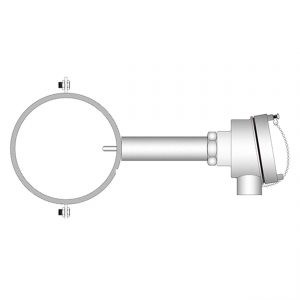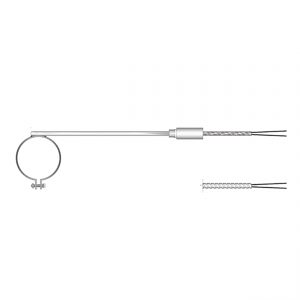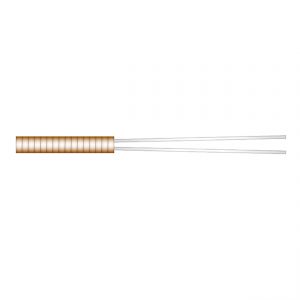-
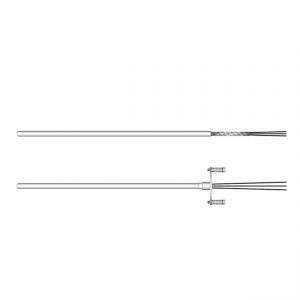 What is RTD? Resistance thermometers, also called Resistance Temperature Detector (RTD), are sensors used to measure temperature by correlating the resistance of the RTD element with temperature. Most RTD elements consist of a length of fine coiled wire wrapped around a ceramic or glass core. The element is usually quite fragile, so it's often placed inside a sheathed probe to protect it. The RTD element is made from a pure material, typically platinum, nickel, or copper. The material has a predictable change in resistance as the temperature changes that is used to determine temperature.
What is RTD? Resistance thermometers, also called Resistance Temperature Detector (RTD), are sensors used to measure temperature by correlating the resistance of the RTD element with temperature. Most RTD elements consist of a length of fine coiled wire wrapped around a ceramic or glass core. The element is usually quite fragile, so it's often placed inside a sheathed probe to protect it. The RTD element is made from a pure material, typically platinum, nickel, or copper. The material has a predictable change in resistance as the temperature changes that is used to determine temperature. -
 What is Thermocouple? A thermocouple is a temperature-measuring device consisting of two dissimilar conductors that contact each other at one or more spots, where temperature diffirential experienced by the different conductors (or semiconductors). Thermocouples are a widely used type of temperature sensor for measurement and control, and can also convert a temperature gradient into electricity.
What is Thermocouple? A thermocouple is a temperature-measuring device consisting of two dissimilar conductors that contact each other at one or more spots, where temperature diffirential experienced by the different conductors (or semiconductors). Thermocouples are a widely used type of temperature sensor for measurement and control, and can also convert a temperature gradient into electricity. -
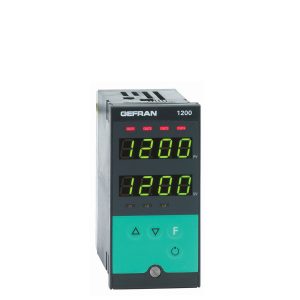 Features • Universal input configurable from faceplate • Accuracy better than 0.2% f.s. under nominal conditions • Control output: relay, logic, Triac , continuous, digital insulated • Hot/cold function with selection of cooling fluid • 3 alarms with completely configurable function • Analog retransmission output • Isolated digital input with configurable function • Auxiliary input for CT (TA) (50mAac) • Heater break or probe short-circuit alarm • Self-tuning, Auto-tuning, Soft-start, bumpless Man/Auto function • Double set, set ramp, timed output function • Optically isolated RS485 serial line.Protocol: GEFRAN CENCAL or MODBUS RTU • Self-diagnosis • Rapid configuration from PC with Winstrum packet
Features • Universal input configurable from faceplate • Accuracy better than 0.2% f.s. under nominal conditions • Control output: relay, logic, Triac , continuous, digital insulated • Hot/cold function with selection of cooling fluid • 3 alarms with completely configurable function • Analog retransmission output • Isolated digital input with configurable function • Auxiliary input for CT (TA) (50mAac) • Heater break or probe short-circuit alarm • Self-tuning, Auto-tuning, Soft-start, bumpless Man/Auto function • Double set, set ramp, timed output function • Optically isolated RS485 serial line.Protocol: GEFRAN CENCAL or MODBUS RTU • Self-diagnosis • Rapid configuration from PC with Winstrum packet -
 What is RTD? Resistance thermometers, also called Resistance Temperature Detectors (RTD), are sensors used to measure temperature by correlating the resistance of the RTD element with temperature. Most RTD elements consist of a length of fine coiled wire wrapped around a ceramic or glass core. The element is usually quite fragile, so it's often placed inside a sheathed probe to protect it. The RTD element is made from a pure material, typically platinum, nickel, or copper. The material has a predictable change in resistance as the temperature changes that is used to determine temperature.
What is RTD? Resistance thermometers, also called Resistance Temperature Detectors (RTD), are sensors used to measure temperature by correlating the resistance of the RTD element with temperature. Most RTD elements consist of a length of fine coiled wire wrapped around a ceramic or glass core. The element is usually quite fragile, so it's often placed inside a sheathed probe to protect it. The RTD element is made from a pure material, typically platinum, nickel, or copper. The material has a predictable change in resistance as the temperature changes that is used to determine temperature. -
 Features
Features- Operator interface with large LCD Display, customizable, with choice of colors
- Scrolling diagnostics messages, configurable, in the selected language
- Easy, guided configuration, copy/paste parameters even with power off
- Preventive maintenance with energy counters (kWh) and load switching
- 16 function block applications
- Timer, setpoint and algorithm programmer for controlling motorized valves
- Advanced tuning of control parameters
- Different password levels
- Universal input configurable for thermocouples, resistance thermometers, linear inputs
- Remote setpoint input
- Relay, logic, isolated analog outputs
- Up to two CT inputs for interrupted load diagnostics
- RS485 serial communication in Modbus RTU
- Removable faceplate for immediate replacement
- Sampling time 60ms
-
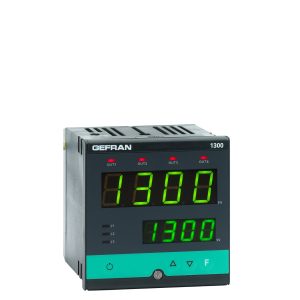 Features • Universal input configurable from faceplate • Accuracy better than 0.2% f.s. under nominal conditions • Control output: relay, logic, Triac or continuous • Hot/cold function with selection of cooling fluid • 3 alarms with completely configurable function • Analog retransmission output • Up to 2 isolated digital inputs with configurable function • Isolated digital input with configurable function • Auxiliary input for CT (TA) (50mAac) • Heater break or probe short-circuit alarm • Self-tuning, Auto-tuning, Soft-start, bumpless Man/Auto function • Double set, set ramp, timed output function • Optically isolated RS485 serial line. Protocol: GEFRAN MODBUS RTU • Self-diagnosis • Rapid configuration from PC with Winstrum packet
Features • Universal input configurable from faceplate • Accuracy better than 0.2% f.s. under nominal conditions • Control output: relay, logic, Triac or continuous • Hot/cold function with selection of cooling fluid • 3 alarms with completely configurable function • Analog retransmission output • Up to 2 isolated digital inputs with configurable function • Isolated digital input with configurable function • Auxiliary input for CT (TA) (50mAac) • Heater break or probe short-circuit alarm • Self-tuning, Auto-tuning, Soft-start, bumpless Man/Auto function • Double set, set ramp, timed output function • Optically isolated RS485 serial line. Protocol: GEFRAN MODBUS RTU • Self-diagnosis • Rapid configuration from PC with Winstrum packet -
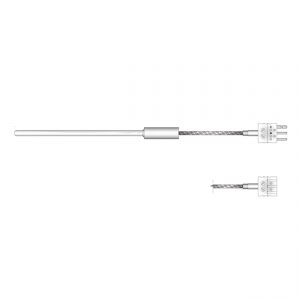 What is RTD? Resistance thermometers, also called Resistance Temperature Detectors (RTD), are sensors used to measure temperature by correlating the resistance of the RTD element with temperature. Most RTD elements consist of a length of fine coiled wire wrapped around a ceramic or glass core. The element is usually quite fragile, so it's often placed inside a sheathed probe to protect it. The RTD element is made from a pure material, typically platinum, nickel or copper. The material has a predictable change in resistance as the temperature changes are used to determine temperature.
What is RTD? Resistance thermometers, also called Resistance Temperature Detectors (RTD), are sensors used to measure temperature by correlating the resistance of the RTD element with temperature. Most RTD elements consist of a length of fine coiled wire wrapped around a ceramic or glass core. The element is usually quite fragile, so it's often placed inside a sheathed probe to protect it. The RTD element is made from a pure material, typically platinum, nickel or copper. The material has a predictable change in resistance as the temperature changes are used to determine temperature. -
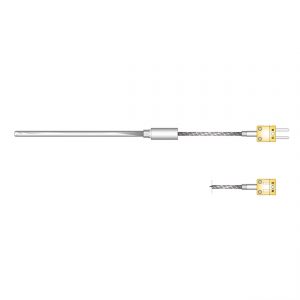 What is Thermocouple? A thermocouple is a temperature-measuring device consisting of two dissimilar conductors that contact each other at one or more spots, where temperature diffirential experienced by the different conductors (or semiconductors). Thermocouples are a widely used type of temperature sensor for measurement and control, and can also convert a temperature gradient into electricity.
What is Thermocouple? A thermocouple is a temperature-measuring device consisting of two dissimilar conductors that contact each other at one or more spots, where temperature diffirential experienced by the different conductors (or semiconductors). Thermocouples are a widely used type of temperature sensor for measurement and control, and can also convert a temperature gradient into electricity. -
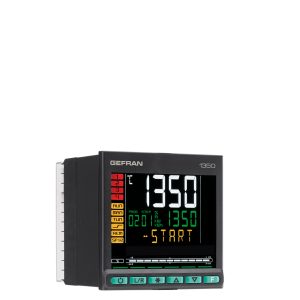 Features • Operator interface with large LCD Display, customizable, with choice of colors • Scrolling diagnostics messages, configurable, in the selected language • Easy, guided configuration, copy/ paste parameters even with power off • Preventive maintenance with energy counters (kWh) and load switching • 16 function block applications • Timer, setpoint and algorithm programmer for controlling motorized valves • Advanced tuning of control parameters • Different password levels • Universal input configurable for thermocouples, resistance thermometers, linear inputs • Remote setpoint input • Relay, logic, isolated analog outputs • Up to two CT inputs for interrupted load diagnostics • RS485 serial communication in Modbus RTU • Removable faceplate for immediate replacement • Sampling time 60 ms
Features • Operator interface with large LCD Display, customizable, with choice of colors • Scrolling diagnostics messages, configurable, in the selected language • Easy, guided configuration, copy/ paste parameters even with power off • Preventive maintenance with energy counters (kWh) and load switching • 16 function block applications • Timer, setpoint and algorithm programmer for controlling motorized valves • Advanced tuning of control parameters • Different password levels • Universal input configurable for thermocouples, resistance thermometers, linear inputs • Remote setpoint input • Relay, logic, isolated analog outputs • Up to two CT inputs for interrupted load diagnostics • RS485 serial communication in Modbus RTU • Removable faceplate for immediate replacement • Sampling time 60 ms -
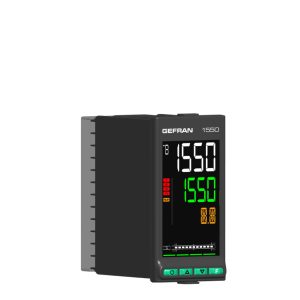 Features
Features- Operator interface with large LCD Display,customizable, with choice of colors
- Scrolling diagnostics messages, configurable, in the selected language
- Easy, guided configuration, copy/paste parameters even with power off
- Preventive maintenance with energy counters (kWh) and load switching
- 16 function block applications
- Timer, setpoint and algorithm programmer for controlling motorized valves
- Advanced tuning of control parameters
- Different password levels
- Universal input configurable for thermocouples, resistance thermometers, linear inputs
- Remote setpoint input
- Relay, logic, isolated analog outputs
- CT inputs for interrupted load diagnostics
- RS485 serial communication in Modbus RTU
- Removable faceplate for immediate replacement
- Sampling time 60ms
- 10V power supply for potentiometer and 24V for transmitter
-
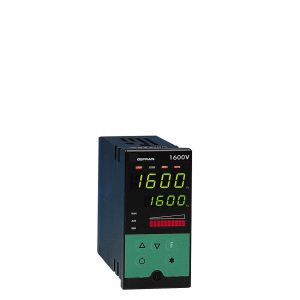 Features • Universal input configurable from the faceplate • Acquisition of the input signal every 120msec ; resolution 30000steps • Two control outputs: relay, logic or analogue with Open/Close valve function • 3 configurable alarms • 2 analogue outputs (retransmission) • 2 digital inputs with configurable function • Auxiliary input for valve position potentiometer feedback • Heater Break or shortcircuit probe alarm • Self and Auto-tuning, Soft-start, Local/Remote setpoint, Auto/Man • Multiset function, timer set ramp
Features • Universal input configurable from the faceplate • Acquisition of the input signal every 120msec ; resolution 30000steps • Two control outputs: relay, logic or analogue with Open/Close valve function • 3 configurable alarms • 2 analogue outputs (retransmission) • 2 digital inputs with configurable function • Auxiliary input for valve position potentiometer feedback • Heater Break or shortcircuit probe alarm • Self and Auto-tuning, Soft-start, Local/Remote setpoint, Auto/Man • Multiset function, timer set ramp -
 Features • Operator interface with large LCD Display, customizable, with choice of colors • Scrolling diagnostics messages, configurable, in the selected language • Easy, guided configuration, copy/paste parameters even with power off • Preventive maintenance with energy counters (kWh) and load switching • 16 function block applications • Timer, set point and algorithm programmer for controlling motorized valves • Advanced tuning of control parameters • Different password levels • Universal input configurable for thermocouples, resistance thermometers, linear inputs • Remote set point input • Relay, logic, isolated analog outputs • Up to two CT inputs for interrupted load diagnostics • RS485 serial communication in Modbus RTU • Removable faceplate for immediate replacement • Sampling time 60ms
Features • Operator interface with large LCD Display, customizable, with choice of colors • Scrolling diagnostics messages, configurable, in the selected language • Easy, guided configuration, copy/paste parameters even with power off • Preventive maintenance with energy counters (kWh) and load switching • 16 function block applications • Timer, set point and algorithm programmer for controlling motorized valves • Advanced tuning of control parameters • Different password levels • Universal input configurable for thermocouples, resistance thermometers, linear inputs • Remote set point input • Relay, logic, isolated analog outputs • Up to two CT inputs for interrupted load diagnostics • RS485 serial communication in Modbus RTU • Removable faceplate for immediate replacement • Sampling time 60ms

